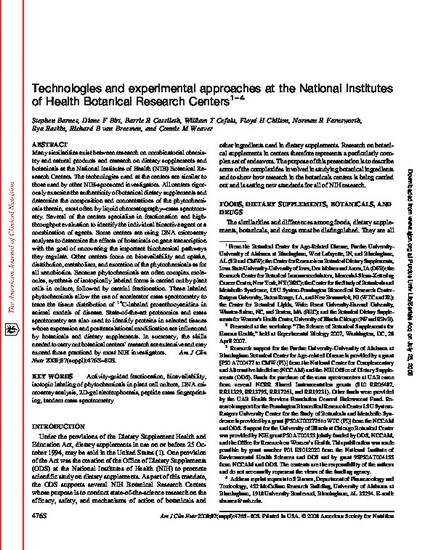
Many similarities exist between research on combinatorial chemistry and natural products and research on dietary supplements and botanicals at the National Institutes of Health (NIH) Botanical Research Centers. The technologies used at the centers are similar to those used by other NIH-sponsored investigators. All centers rigorously examine the authenticity of botanical dietary supplements and determine the composition and concentrations of the phytochemicals therein, most often by liquid chromatography–mass spectrometry. Several of the centers specialize in fractionation and highthroughput evaluation to identify the individual bioactive agent or a combination of agents. Some centers are using DNA microarray analyses to determine the effects of botanicals on gene transcription with the goal of uncovering the important biochemical pathways they regulate. Other centers focus on bioavailability and uptake, distribution, metabolism, and excretion of the phytochemicals as for all xenobiotics. Because phytochemicals are often complex molecules, synthesis of isotopically labeled forms is carried out by plant cells in culture, followed by careful fractionation. These labeled phytochemicals allow the use of accelerator mass spectrometry to trace the tissue distribution of 14C-labeled proanthocyanidins in animal models of disease. State-of-the-art proteomics and mass spectrometry are also used to identify proteins in selected tissues whose expression and posttranslational modification are influenced by botanicals and dietary supplements. In summary, the skills needed to carry out botanical centers’ research are extensive andmay exceed those practiced by most NIH investigators.
- Activity-guided fractionation,
- bioavailability
Available at: http://works.bepress.com/diane_birt/6/
